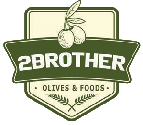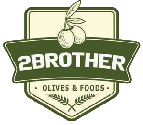Olive Harvest Season in Egypt: A Guide to Soil Management and Best Practices

Olive Harvest Season in Egypt: A Guide to Soil Management and Best Practices
As September arrives, the olive harvest season in Egypt begins, marking a crucial time for farmers who have spent the past year focusing on essential soil management practices to ensure a bountiful yield. This season is not just a harvest—it’s the culmination of months of care and attention that determines the quality of olives produced. In this guide, we explore the importance of soil management, including the growing trend of using vegetative cover, to maximize olive production in Egypt.
The Importance of Soil Management for Olive Trees
Soil management is a key factor in the successful cultivation of olive trees. Proper soil care ensures that the trees receive the nutrients and moisture they need to thrive, particularly in Egypt’s diverse and sometimes challenging climate.
While it might seem that olive trees require total soil tilling, selective tilling is actually more beneficial. This practice focuses on removing weeds and breaking up the superficial crust that can form on the soil’s surface. This targeted approach not only promotes healthier soil but also reduces costs, leading to better yields without the need for extensive labor or chemical inputs.
Benefits of Vegetative Cover in Olive Groves
In recent years, vegetative cover has become increasingly popular among Egyptian olive growers. This sustainable practice involves planting specific types of grasses or legumes between olive tree rows, offering numerous benefits that contribute to a healthier and more productive olive grove.
Why Use Vegetative Cover?
- Erosion Control: The roots of cover crops bind the soil, preventing erosion, particularly important in Egypt’s dry and windy environments.
- Moisture Retention: Ground cover reduces soil evaporation, helping olive trees access water during the hot, dry months.
- Nutrient Enrichment: Some cover crops, like legumes, add essential nutrients back into the soil, enhancing its fertility and supporting tree growth.
- Cost Efficiency: By reducing the need for frequent tilling and herbicide application, vegetative cover lowers overall maintenance costs.
Preparing for the Olive Harvest Season in Egypt
With the olive harvest just around the corner, Egyptian farmers are gearing up for this busy time of year. The harvest process, whether done by hand or with mechanical shakers, is the final step in a year-long journey of soil management, pruning, and care.
Steps for a Successful Olive Harvest:
- Monitor Soil Health: Continue to manage the soil by controlling weeds and maintaining vegetative cover to support the trees as they produce their final fruit.
- Timing is Key: Harvesting olives at the right time is crucial for ensuring the best oil quality. Early harvests produce oils with robust, peppery flavors, while later harvests yield milder, fruitier oils.
- Quality Control: Whether hand-picking or using machines, handle olives carefully to avoid damage, ensuring the highest quality product for pressing.
Conclusion: Celebrating the Olive Harvest
The olive harvest season in Egypt is more than just a time to gather fruit; it’s a celebration of the hard work and dedication that goes into producing one of the country’s most treasured agricultural products. By focusing on soil management techniques like selective tilling and vegetative cover, Egyptian farmers can ensure a successful harvest year after year.









